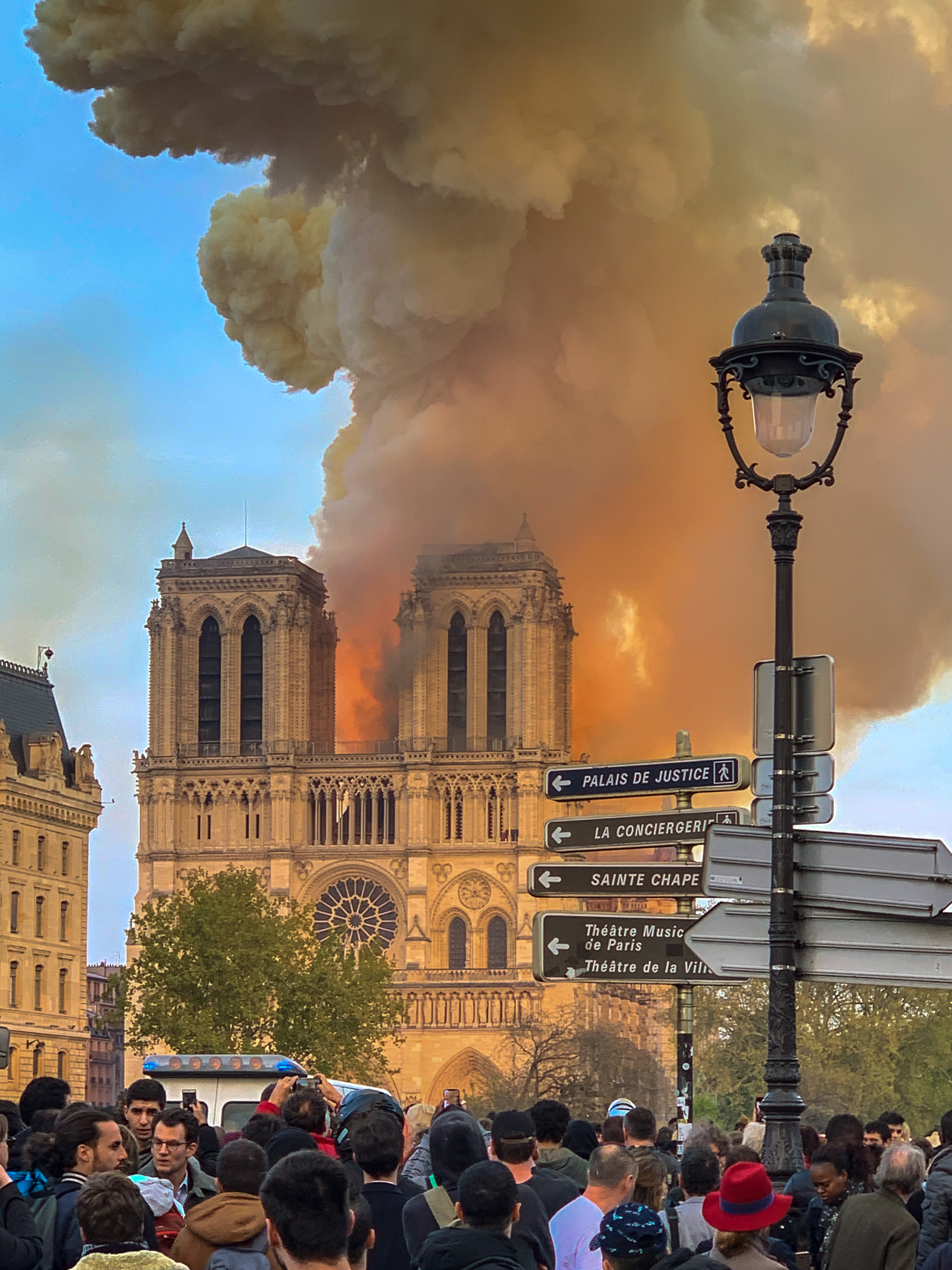Fiona Morgan, News Editor
Residents of Paris and people around the world watched in horror as a beloved cathedral burned.
The roof of Notre Dame caught fire April 15 around 7 p.m. local time and the spire fell at 7:53 p.m. Part of the roof collapsed 15 minutes later, and it took more than 400 firefighters and took at least nine hours to put the fire out completely.
Firefighters were able to save relics inside the building by making a “human chain” and passing items along the line, CBS reported. Among the artifacts safely removed were the tunic of St. Louis, a fragment and nail believed to be from the cross on which Jesus was crucified and the crown of thorns believed to be worn by Jesus.
Officials noted that the fire could have been worse. A Notre Dame spokesperson initially told French media that none of the building would remain. Authorities are investigating the fire as an accident and, at the time of writing, speculate that a possible electrical shortage could have caused it, in addition to outdated fire-prevention safeguards.
CNN reported that surviving paintings may sustain smoke damage and the extreme heat may have weakened the building’s stone structure. Officials have yet to fully survey the damage and determine the cost of restoration.
Asbury art professor Linda Stratford has been coordinating student trips to Paris for 17 years and has visited Notre Dame many times. She led two-week trips for course credit from 2002-2010 and now leads the study-abroad semester trips to Paris, the fourth of which will take place this fall.
Stratford said her favorite thing about visiting the cathedral is “crossing the threshold as one steps inside the building to find harbour away from the noise and glare of the big city.” She said, “Smelling the candles and wood and seeing the beauty of stained glass is transformational each time.”
Students on the fall Paris semester trip will likely not be able to tour the inside of the building, as rebuilding efforts could take years.
France’s President Emmanuel Macron said the cathedral would be rebuilt within five years, but experts say it could take much longer. People all over the world have already pledged over $1 billion to restore the structure, though how it should be restored is a topic of much debate.
Notre Dame was built over the course of two centuries starting in the 1160s and has seen multiple periods of neglect and restoration. One significant destruction of the cathedral happened in the late 1700s when rioters decapitated 28 statues of kings, the church bells were removed and melted down and French authorities took down the spire when it began to look unstable. However, the Romantic Movement in the 1800s led to a massive renovation project. Between the 1840s and 60s, architects rebuilt the spire using traditional methods, resculpted the heads of the statues and added gargoyles and other decoration to the exterior.
The attic that burned was made up almost entirely of wood, but a modern design would possibly use steel or titanium. “Something contemporary will be safer and faster to rebuild,” French architect Christiane Schmuckle-Mollard told the New York Times.
Some want to see the spire rebuilt exactly how it was in the 1800s, desiring to keep as much of the original beauty as possible. Others argue that since the cathedral has been altered many times already, newer building methods and materials should not be ruled out.


